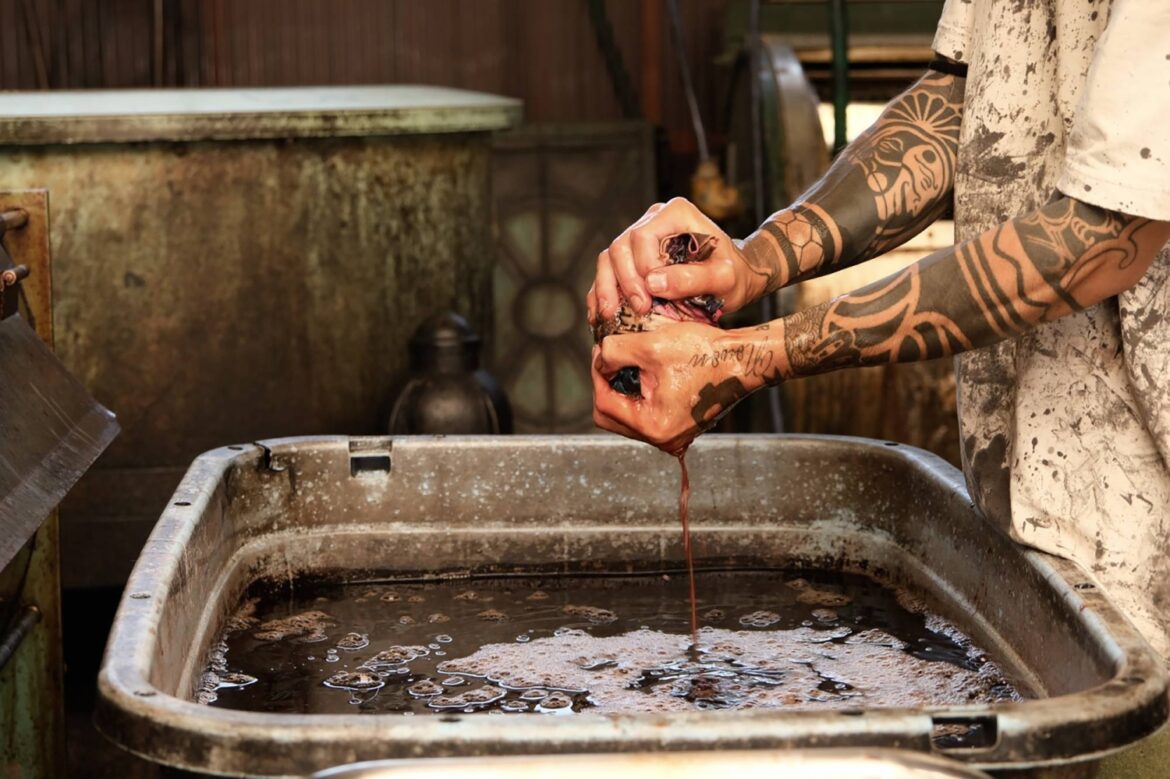Higashiomi, Shiga Pref. –
On a hot summer day in July, it’s nearly 45 degrees Celsius inside this greenhouse in Shiga Prefecture. Along with the humidity, though, there’s another type of moisture in the air: the deep burnt orange of kakishibu (persimmon juice) setting into the threads of 30-meter lengths of fabric laid out to dry.
Through sun exposure and repeated immersion in containers of the natural dye, the textiles will gain a light amber tone before developing a darker gradient to be used for trousers, shirts and jackets.. This, second-generation textile worker Kiyoshi Omae tells me, is kakishibu-zome, a natural dyeing method from kaki (Japanese persimmons) used in Japan for more than a millennium.
“You don’t notice its function,” Omae says. “It is like an unseen barrier that creates a kind of protection and filter for the air.”


AloJapan.com